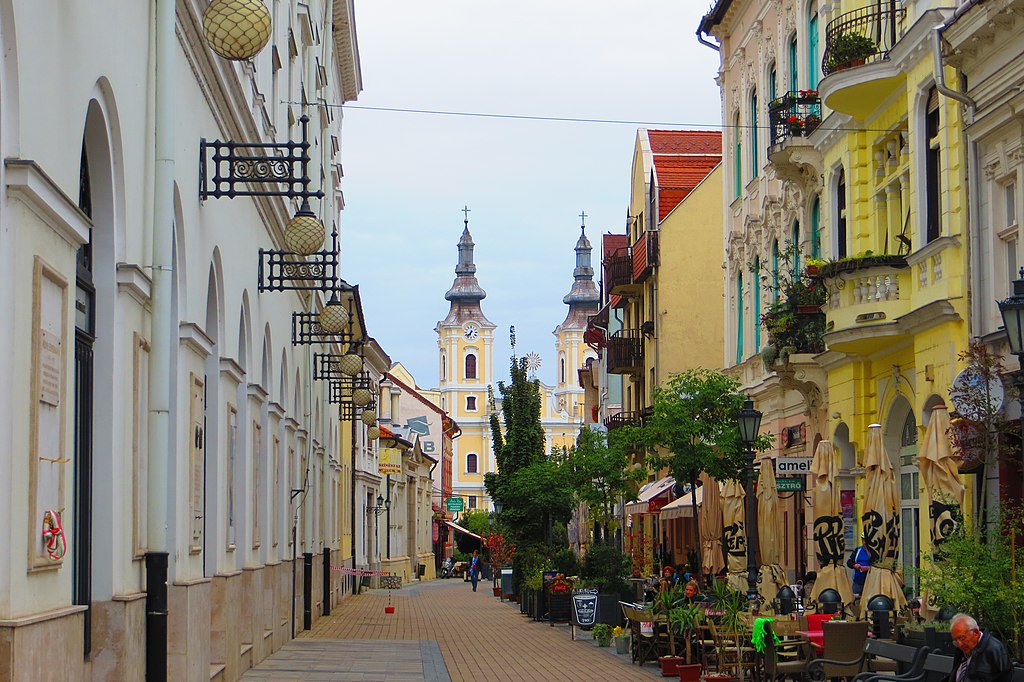Did women live in Hungary at all?
Some Hungarian cities have no public space dedicated to women. Even famous women linked to the community rarely get a street named after them. On the other hand, Déryné is very popular across Hungarian towns and cities.

Street name in Budapest (© Blue Corner Studio/Shutterstock )
As the Hungarian partner of EDJNet, we have looked into whether and how gender equality is reflected in the naming of public places across Hungary. Spoiler: it is not. Our data covers 45 Hungarian towns and cities, ranging from the 6284 streets of Budapest to the 157 streets of Ajka. The data includes all the county capitals as well as some smaller towns such as Gyula, Szentes, Cegléd, Baja, and Hajdúböszörmény.
During the research, we went through over 28,000 street names. The result says it all: only 388 of those were named after a woman.
Street names that may indicate a woman’s first name as well as a flower (e.g. kamilla, ibolya, jázmin), were not counted here, as we do not know the intention behind the such naming. If these instances were counted as well, the picture would be somewhat better, but only marginally. On the other hand, we did count streets with a single name only, even if they do not necessarily relate to a particular person. This is quite frequent with female names: there is a city (Érd) where naming streets might simply have been done by using the official Hungarian first names’ registry.
Indeed, in relative terms Érd clearly comes in the first place, since 60 out of 772 streets carry women’s names there. However, only one of them is a full name, while the others are just first names – and the full name belongs to Szép Ilonka, a fictional heroine invented by Mihály Vörösmarty.
There is a relatively high proportion of streets named after women also in Szeged, where they represent 43 out of 1276 public places. But even in this city, it is largely women’s first names that appear on street names’ boards. When it comes to the capital, Budapest, out of 6284 public places 1203 refer to a person’s name, but only 67 are females. Except for Szolnok, in all the other cities and towns the number of streets dedicated to women does not exceed 10, it usually oscillates between 5 and 10.
Bányai Júlia street in Budapest: The hero of the 1848-49 freedom fight, laureate spy, equestrienne and innkeeper is one of the few women getting a street named after their full name.
There are also examples on the other end of the spectrum, where there are no public places with female names at all. This is the case for Ajka, Gyöngyös, Cegléd, and Ózd. Budaörs, Szekszárd, and Hajdúböszörmény have exactly one street each named after a woman.
In places where we did manage to find streets dedicated to women, apart from first names, the names of saints and queens tend to be popular.
Queen Elisabeth’s street in Fót.
One woman stands out: the celebrated 19th century opera singer Róza Déryné Széppataki. There is a Déryné street in Szeged, Gödöllő, Zalaegerszeg, Miskolc, Kecskemét, Salgótarján, Győrn, Kaposvár, Dunakeszi, Jászberény, Tatabánya, and Mosonmagyaróvár.
There is, on the other hand, a concerning lack of names of locally known and appreciated women, like historical figures, or impactful, locally born artists, teachers, scientists or athletes. There are, of course, exceptions, such as the local martyr of the 1956 revolution Erzsébet Mány in Gyula, the graphic and ceramic artist Erzsébet Ravasz in Dunaújváros, and Botánszky Pálné in Békéscaba, the leading face of Hungary’s social-democratic, union and women’s rights movement in the early 20th century.

